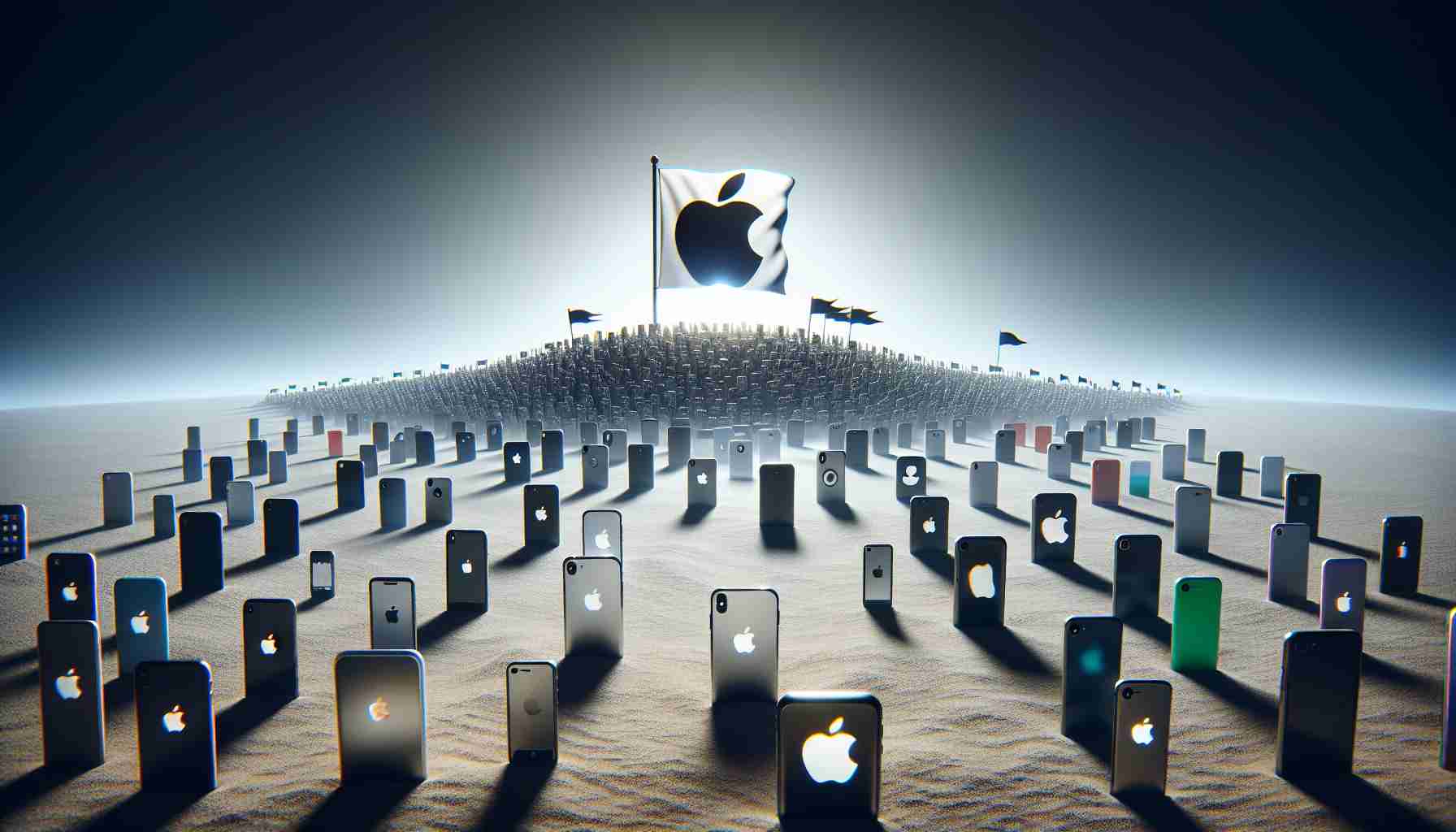The smartphone industry faced a shakeup in the first quarter of 2024, as Apple experienced a decline in smartphone shipments, according to data from the International Data Corporation (IDC). During this period, Apple shipped 50.1 million iPhone models, accounting for a market share of 17.3 percent. This marked a significant drop of 9.6 percent compared to the same period last year.
Beyond Apple’s decline, the surge of Android smartphone manufacturers striving for market dominance played a pivotal role in reshaping the landscape. As a result, Apple was pushed to the second spot, losing its title as the leading smartphone maker. South Korean tech giant Samsung emerged as the new leader, capturing a market share of 20.8 percent.
Chinese smartphone brands, like Huawei, continued to gain traction and increase their market share during this period. They have successfully capitalized on the growing demand for smartphones in emerging markets. This trend showcases the global appeal and affordability of their devices.
Interestingly, despite Apple’s decline, the overall global smartphone shipments experienced a healthy surge of 7.8 percent, reaching 289.4 million units between January and March. This surge implies a strong demand for smartphones worldwide, driven by consumer reliance on these devices for various purposes and their need for connectivity.
Even though Samsung witnessed a slight decline of 0.7 percent compared to the same period last year, it successfully retained its position as the leading smartphone manufacturer by shipping 60.1 million handsets and maintaining a market share of 20.8 percent. Chinese handset maker Xiaomi also demonstrated impressive growth of 33.8 percent during this period, shipping 40.8 million devices and capturing a market share of 14.1 percent.
Another Chinese major, Transsion, experienced phenomenal growth with shipments skyrocketing by 84.9 percent. The company shipped 28.5 million units, securing a market share just shy of 10 percent. On the other hand, Oppo, the fifth top handset maker, witnessed a decline of 8.5 percent, shipping 25.2 million devices and capturing a market share of 8.7 percent.
As competition intensifies, manufacturers must respond to the increasing demands of consumers for more innovative features and affordable options. Adapting strategies and prioritizing customer needs will be crucial to navigate the ever-evolving smartphone market.
The smartphone industry is a highly competitive market that is constantly evolving and experiencing shifts in market share. According to the International Data Corporation (IDC), Apple faced a decline in smartphone shipments in the first quarter of 2024, resulting in a significant drop of 9.6 percent compared to the same period last year. Apple shipped 50.1 million iPhone models, accounting for a market share of 17.3 percent.
One of the key factors contributing to the reshaping of the smartphone market is the surge of Android smartphone manufacturers striving for market dominance. This competition was a crucial factor in pushing Apple to the second spot. Samsung, a South Korean tech giant, emerged as the new leader, capturing a market share of 20.8 percent.
Chinese smartphone brands, such as Huawei, have been gaining traction and increasing their market share. They have been successful in capitalizing on the growing demand for smartphones in emerging markets. This highlights the global appeal and affordability of their devices.
Despite Apple’s decline, the overall global smartphone shipments experienced a healthy surge of 7.8 percent, reaching 289.4 million units between January and March. This growth indicates a strong demand for smartphones worldwide. Consumers rely on these devices for various purposes and their need for connectivity.
Samsung, despite a slight decline of 0.7 percent compared to the same period last year, successfully retained its position as the leading smartphone manufacturer. The company shipped 60.1 million handsets, maintaining a market share of 20.8 percent. Chinese handset maker Xiaomi demonstrated impressive growth of 33.8 percent during this period, shipping 40.8 million devices and capturing a market share of 14.1 percent.
Another Chinese major player, Transsion, experienced phenomenal growth with shipments skyrocketing by 84.9 percent. The company shipped 28.5 million units, securing a market share just shy of 10 percent. On the other hand, Oppo, the fifth top handset maker, witnessed a decline of 8.5 percent, shipping 25.2 million devices and capturing a market share of 8.7 percent.
As competition in the smartphone industry intensifies, manufacturers must respond to the increasing demands of consumers for more innovative features and affordable options. Adapting strategies and prioritizing customer needs will be crucial to navigate the ever-evolving smartphone market.
For more information about the smartphone industry and market forecasts, you can visit the International Data Corporation’s website: IDC.
The source of the article is from the blog foodnext.nl
